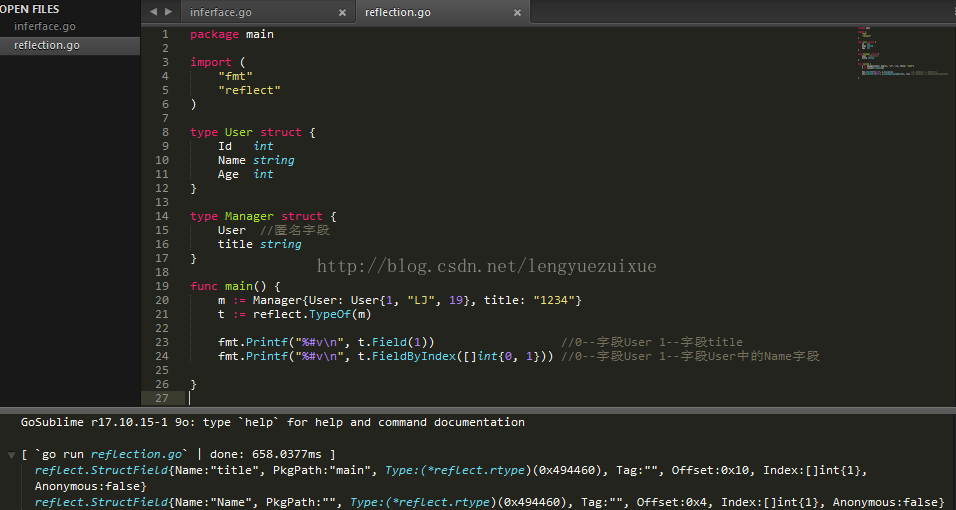反射reflection
反射可大大提高程序的灵活性,使得interface{}有更大的发挥余地
反射使用typeOf和valueOf函数从接口中获取目标对象信息
反射会将匿名字段作为独立字段(匿名字段本质)
想要利用反射修改对象状态,前提是interface.data是settabele,即pointer-interface
基本数据类型:
复杂数据类型:
package mainimport ("fmt""reflect")type User struct {Id intName stringAge int}func main() {u := User{1, "LJ", 19}Set(&u)fmt.Println(u)}func Set(o interface{}) {v := reflect.ValueOf(o)if v.Kind() != reflect.Ptr || !v.Elem().CanSet() { //指针 是否可设置判断fmt.Println("XXX")return} else {v = v.Elem()}f := v.FieldByName("Name") //通过字段名获取字段if !f.IsValid() { //字段是否存在判断fmt.Println("BAD")return}if f.Kind() == reflect.String { //类型判断f.SetString("BYEBYE")}}
通过反射可以“动态”调用方法
package mainimport ("fmt""reflect")type User struct {Id intName stringAge int}func (u User) Hello(name string) {fmt.Println("Hello", name, "my name is", u.Name)}func main() {u := User{1, "LJ", 19}v := reflect.ValueOf(u)mv := v.MethodByName("Hello") //根据名称获取方法args := []reflect.Value{reflect.ValueOf("joe")} //参数mv.Call(args) //调用}


